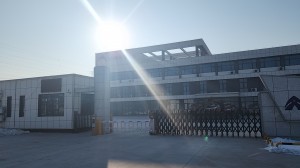In modern building mortar systems, hydroxypropyl methylcellulose (HPMC), as a key cellulose ether additive, plays a core role in enhancing construction performance and material stability. Among them, “water retention” is one of the most important and direct functions of HPMC, which has a decisive impact on the setting, hydration, strength development and construction experience of mortar. With the rapid development of high-performance mortar, the water retention performance of HPMC has become a key indicator for measuring the quality of mortar and its adaptability to construction.
1.The mechanism by which HPMC enhances the water retention of mortar
1.1. Form a viscoelastic film to impede the migration of free water
After dissolving in mortar, HPMC forms a uniform high-molecular network structure, which encapsulates water and adsorbs it on the surface of aggregates and cementitious materials, significantly reducing the evaporation rate of water. This viscoelastic membrane can effectively delay the seepage of water, allowing the hydration of cement to take place in a fully moist environment.
1.2. Increase the viscosity of mortar to reduce stratification and bleeding
An appropriate amount of HPMC can enhance the viscosity and anti-segregation ability of fresh mortar, thereby stabilizing the mixture system. The increase in viscosity means that water is “locked” in the mortar system, making it less likely for bleeding to occur and enhancing the overall water retention rate from the source.
1.3. Dual adjustment of water absorption and water release
HPMC has a certain water absorption capacity, but its process of releasing water is slow. During the cement hydration process, HPMC can release the adsorbed water in a timely manner, keeping the system in a relatively moist state all the time, thereby promoting uniform hydration and the formation of a dense structure.
2. The influence of mortar water retention on construction performance
2.1. Enhance the smoothness and workability of construction
Stable moisture content in mortar can make the construction process smoother, allowing construction workers to achieve better spreadability, extensibility and fullness. For products such as tile adhesive, plastering mortar and self-leveling mortar, the better the water retention, the softer the construction feel and the less likely it is to drag the knife.
2.2. Extended opening hours and Adjustability
In mortars represented by tile adhesives and external wall insulation systems, open time is a key performance. After HPMC improves water retention, it can significantly extend the workable time of materials under air exposure conditions, prevent rapid water loss and premature drying of the skin, and enhance the firmness of tile adhesion.
2.3. Reduce initial shrinkage and avoid early cracking
If the moisture in mortar is lost too quickly, it will cause the surface to dry and shrink faster than the interior, resulting in stress imbalance and making cracks more likely to occur. The stable water retention performance of HPMC can effectively alleviate this shrinkage difference, reduce the risk of surface cracking, and improve the final appearance quality.
3. The influence of water retention on the mechanical properties of mortar
3.1. Promote the full hydration of cement
The hydration of cement requires sufficient water. If there is a lack of water in the early stage, it will cause incomplete hydration and “false cementation”, ultimately reducing the strength. HPMC achieves higher early and later strength by delaying water evaporation and keeping cement particles in a moist environment for a long time.
3.2. Enhance the bonding strength
Moisture stability keeps the interface between the cementitious material and the base surface as well as the aggregate in a more suitable environment for chemical reactions, which is conducive to the formation of a denser and more stable interface structure. Therefore, the bonding performance is better, especially in the tile adhesive and external insulation mortar systems, the advantages are more significant.
3.3. Enhance the uniformity and density of the mortar structure
Under conditions of sufficient water retention, the internal structure of the mortar becomes more uniform, and the porosity decreases, thereby enhancing its durability and impact resistance.
4. Factors Affecting the water retention performance of HPMC
Degree of substitution (MS, DS) and viscosity grade: The higher the degree of substitution and the greater the viscosity, the more obvious the water retention effect.
Dosage and dispersibility: Only by adding in appropriate amounts and fully dispersing can the best water retention performance be achieved.
The components of the mortar system, such as the fineness of cement, sand ratio, and water-binder ratio, all affect the performance of HPMC.
Post time: Nov-11-2025







